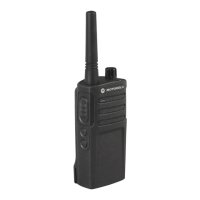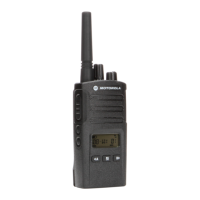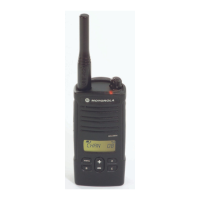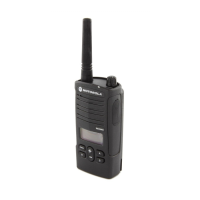Français Canadien
39
FONCTIONS DE
PROGRAMMATION
Exemple de programmation d’auto-
balayage
L’auto-balayage est le troisième mode de
programmation et il peut être soit allumé soit
éteint sur un canal particulier.
Pour mettre en marche l’auto-balayage :
1. Entrez dans le mode Configuration et
sélectionnez le canal désiré .
2. Appuyez brièvement trois fois sur le bouton
PTT pour entrer en mode auto-balayage du
mode de sélection de programmation. La radio
annonce "Auto-Scan" et le réglage actuel
d’auto-balayage (éteint ou allumé).
3. Appuyez brièvement sur le bouton SB1 ou SB2
pour allumer ou éteindre la fonction auto-
balayage du canal.
4. Appuyez longuement sur le bouton PTT. Le
témoin lumineux clignotera en vert pour
indiquer le mode « Attente ».
5. Appuyez longuement sur le bouton PTT pour
quitter le mode Programmation ou éteignez la
radio.
Exemple de programmation Active Canaux
Active Canaux est le dernier mode de
programmation. Vous pouvez modifier le
nombre maximal de active canaux de la radio
est programmée à soutenir.
Pour régler les canaux actifs
1. Entrez dans le mode Configuration et
sélectionnez le canal désiré .
2. Appuyez brièvement quatre fois sur le bouton
PTT pour entrer en mode Canaux Actifs.
3. Appuyez brièvement sur SB1 ou appuyez
brièvement sur SB2 jusqu’à ce vous obteniez
des canaux la valeur désirée.
4. Appuyez longuement sur le bouton PTT. Le
témoin lumineux clignotera en vert pour
indiquer le mode « Attente ».
5. Appuyez longuement sur le bouton PTT pour
quitter le mode Programmation ou éteignez la
radio.









